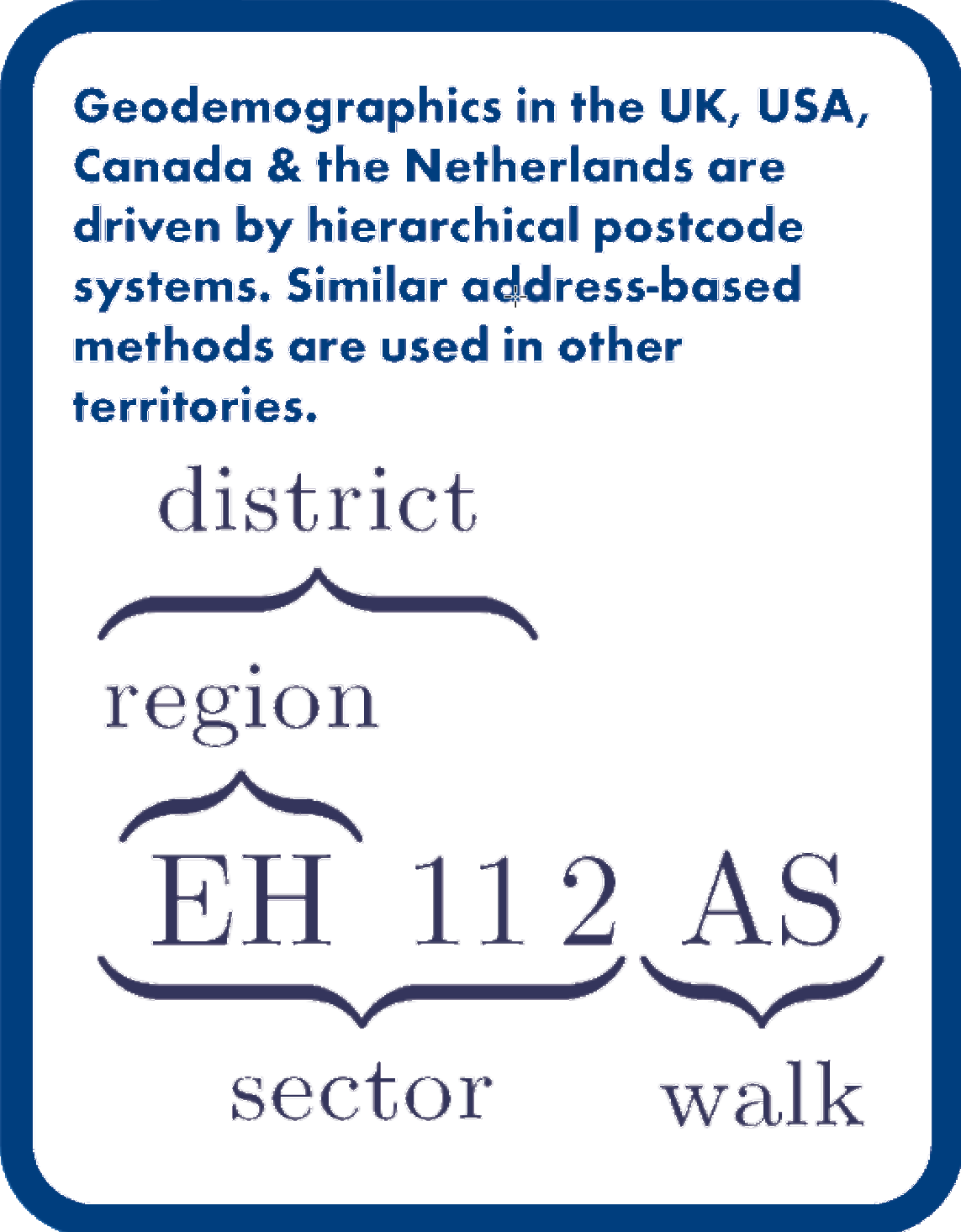Location, location, location
When attempting to extract a geodemographic lifestyle profile from a postcode, it is necessary to be very clear about how it should be done. There are varying approaches, depending how much of the full postcode is actually used. To illustrate, we will use the postcode of our office here in Edinburgh, which is EH11 2AS.
Anatomy of a postcode
The EH part of our postcode is called the postcode region, of which there are 124 in the UK. This if often what people think of when they talk about postcodes and mortality for instance, as the UK has large differences in mortality and longevity around the regions. However, with an estimated population of 60.6 million in mid-2006 according to the Office for National Statistics, there are hundreds of thousands of people in each postcode region. As you might imagine, grouping people arbitrarily by region is a fairly crude way of assessing their lifestyle characteristics. In fact, it can be downright misleading: the lifestyle characteristics of a lawyer in Aberdeen will have more in common with another lawyer in Yorkshire, than with manual labourers in Aberdeenshire, for example.
Some researchers have used the postcode district (EH11) or the postcode sector (EH11 2). For example, McLoone (2000) published so-called Carstairs Scores for deprivation using Scottish Postcode Sectors from the 1991 Census. However, a key drawback of this approach lies in the specificity lost through use of the postcode sector. As noted in McLoone (2000), a postcode sector includes approximately 3,000 households and is only a good predictor of socio-economic status where the postcode sector is relatively homogeneous.

The best way of using a postcode is to use it in its entirety, i.e. EH11 2AS. There are around 1.7 million postcodes in the UK, of which around 1.5 million are residential addresses. Straight away we can see the power of using the full postcode, since it covers on average 40 people. A postcode will usually cover a single street, and to walk down a street in the UK will give you a very good idea of the sort of person who lives there. Thus, the full postcode can give a much more detailed insight into someone's lifestyle characteristics than a fragment of the postcode can. A group of forty people in a street will be more homogeneous than a group of several hundred thousand.

Postcode + Geodemographic profiler = Lifestyle
Of course, it is unwieldy to work with postcodes directly in risk analysis as there are 1.7 million of them. That is why we use a so-called geodemographic profiler to simplify postcodes into a geodemographic type. The purpose of a geodemographic type is simply to group similar people of similar lifestyles, regardless of what their actual geographic location is. For example, the Mosaic classification from Experian assigns the same type code A02 to postcodes as diverse as AB10 6HX (in Aberdeenshire) and YO10 4BG (in Yorkshire).
In all there are 61 Mosaic type codes, which is obviously a far more manageable number than 1.7 million postcodes. The Mosaic type codes are also fewer in number than the 124 postcode regions, but their best feature is that they are homogeneous: in our earlier example, the similar well-to-do lawyers now find themselves in the same Mosaic type code, AO2, rather than in the separate AB and YO regions. As a result, risk analyses using geodemographic profilers are far more powerful than those conducted using simple geographic regions.
Understanding risk from past experience is a major part of the problem, but reserving for how risk might change in the future is another vital component.
